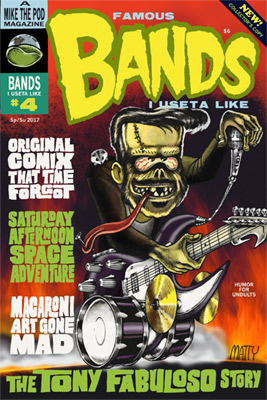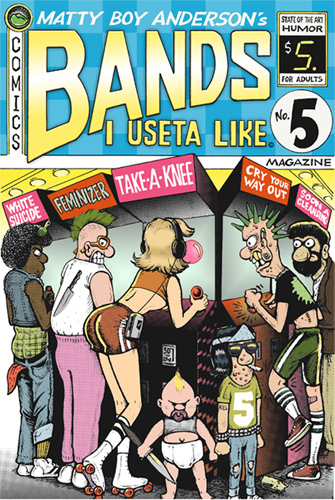If you’re reading this on Christmas afternoon because your family is driving you nuts, and you have the technology, I suggest that you legally download The Iron Giant, from 1999. Gather everyone around, and watch it with them. It will make your holidays extra wonderful.

To its benefit, Iron Giant bowed before “Y2K” and 9/11, so its themes aren’t muddled in 21st century politics and bias. It’s based on a novel by Ted Hughes from 1968, yet it still makes the fear of nuclear annihilation daisy-fresh. Director Brad Bird was weaving the magic he would later perfect for Pixar with The Incredibles. In the 1980s, just out of CalArts, Bird directed the one animated episode of Steven Spielberg’s Amazing Stories anthology. It was so good that it’s typically the only episode of that show anyone recalls. (“The Mission” with Kevin Costner was a corker, too.)
Tim Burton produced, that’s the reason for the overbearing Elfman score. It was a few years before that kind of thing worked its way out of the system. In the 80s, restraint was a dirty word, especially in cartoons.
Restraint works wonders for The Iron Giant, however. The art and design hew realist, and there’s minimal dialogue for most of the (86 minute, relatively short) running time. In 1957, a 9-year-old boy named Hogarth (that’s a sly reference to Byrne Hogarth) discovers a 50-foot robot in the forest. He develops a bond with the robot, which complicates matters when it appears the giant might be an alien weapon. Not a gun. Think genocidal.
The look of the giant itself is computer-assisted, while the rest of the film is traditionally animated. It’s aged a lot better than you’d expect, and shouldn’t provoke any prejudices against CGI you or your jerky relatives might have. (Admittedly, the increasing quality of animated TV shows like Futurama takes away a bit of the luster.) The giant robot is formidable but cute, and in the years since has visually influenced mechanoids in other mediums with his steam-shovel underbite.

(l-r:) Reptron, Bulkhead, Crumplezone. Of course I thought of Transformers.
The Giant is voiced by former breakdancer Vin Diesel. Vin is an ultra-sincere guy. He speaks maybe ten words as the Giant, and he compresses a galaxy of emotions into each one. Not to mention, his voice is so deep it’s easy to believe it’s coming from a 50-foot metal man. Believe it or not, he wasn’t the first choice; Peter Cullen was, thanks to his history voicing Optimus Prime.
Hogarth’s voice is provided by Eli Marienthal, an actual kid voice actor, and combined with Bird’s deft facial animation, conjures a remarkably “living” character. If you deign to charge this film “boy-centric”, as is the mode au courant to do, I would in turn accuse you of having an agenda against such things. Don’t sully the small world of good family entertainment with your neurotic micro-criticisms. You see the shape we’re already in.
At 39:00, Hogarth tries espresso for the first time with his new friend Dean McCoppin, a beatnik metal sculptor (jazz legend Harry Connick, Jr). It’s a short demonstration of what a spectacular animator Brad Bird is, as Hogarth goes bonkers on coffee. Like I said, Bird graduated from CalArts, Chuck Jones’ turf, a college I couldn’t get into. He attended the legendary A113 classroom, which is why you see that designation hidden in his work (and that of other grads). If it seems familiar to you already, that’s because it was Krusty the Klown’s inmate number. Brad Bird directed “Krusty Gets Busted”.

Harry Connick Jr. does an admirable job as Dean’s voice; he even sounds handsome. What can I say; the cast of characters is likable. Jennifer Aniston plays Hogarth’s mom Annie, who is drawn with a preternaturally cute nose. Even the villain of the piece, a government agent named Kent Mansley, is hard to totally hate- and he’s played by the pro golfer who tried to take away Grandma Gilmore’s house (Christopher McDonald).
The great John Mahoney is General Shannon Rogard, whom I really wished they’d named something else, since it’s very similar to the protagonist. It doesn’t matter. Frasier Crane’s pop makes terrific brass. The scenes where he locks horns with Mansley crackle like a classic Twilight Zone episode. Richard Matheson would have loved a smart kids’ movie where everyone is faced with atomic doom.

If you haven’t seen The Iron Giant, you might consider doing so before you continue reading. I don’t want to “spoil” it for you, not because I believe it could be spoiled, but because I’ve noticed audiences are freaking mental cases when it comes to “spoilers” these days. Anyway, I’m going to keep talking, so do as you will.
The best use of computer animation in the film comes when the Giant’s automatic defenses are triggered, and he goes postal. Does… does that mean anything anymore? I don’t think so. The Iron Giant goes batshit.
Weird weapons pop out of everyplace. His arms become blasters, tentacles emerge as his chest opens up, and he becomes a death machine from outer space. This is where the comparisons to coming-of-age tales of yore like Old Yeller end. Imagine if Old Yeller wasn’t rabid, but was instead a Pandora’s box bristling with alien artillery. That’s how spectacular The Iron Giant is.





This is how you kids’ movie, folks.
I’ll leave you to discover it yourself from there. Believe me, it’s well worth it. More recently The Iron Giant has been getting the credit it always deserved. It wasn’t marketed properly, so it took the world a little while to realize how brilliant it is. Funny how marketing always gets in the way of what’s genuine.
Merry Christmas.










You must be logged in to post a comment.